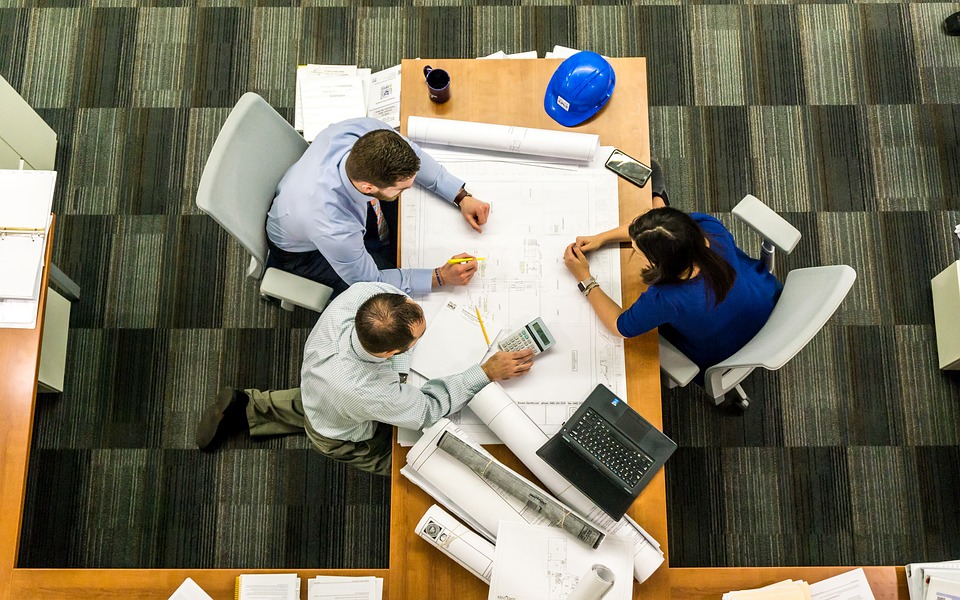Safety checklist for companies – how to boost workplace safety and health
In 2018, the cost of work-related illness and injuries reached around $70 billion, according to the Liberty Mutual Workplace Safety Index. Workplace injuries can cost businesses more than $15 billion a year, and considering that the employers are the ones that pay all these expenses, appropriate workplace safety measures are necessary.
The Health and Safety Regulations require all companies to have an effective health and safety program that prevents and minimises injuries and illness in the workplace. As a business manager or owner, it’s your role to maintain and even improve your employees’ health and safety. Depending on the hazards your company exposes your employees to, and on the size of the space, the content of the health and safety program can vary. While a small business can list its safety and health policy in a couple of pages, a large enterprise would need numerous chapters to inform its workers on the rules and regulations they have to follow.
The following guidelines are created to help you improve your health and safety program.
Inspect the workplace
If your employees work with tools and equipment, you should hire a professional to check them periodically. It’s crucial all of them to be well maintained for your workers to operate their job safe. All storage areas should be inspected regularly to ensure that they are organised according to an established policy. Teach people how to stack the boxes safely, and verify if they respect your instructions. By training your employees on how to lift heavy loads, you help them prevent injuries. All fire exits should be clearly marked so the workers have no issues in finding them.
Use labels and signs to communicate information because they are simple and effective means to help people to avoid hazard and understand safety procedures. They can work as reminders and warnings at the workplace.
It’s important for the workplace to be clean to avoid accidents. A messy space is difficult to clean but it’s perfect for potential dangers to hide. Check the workspace to ensure that is always organised, clean and there are no tangled cords.
Educate your employees
Training is essential to minimise workplace injury risk. When you hire new employees, it’s important to provide training to teach them the rules they have to respect when completing certain tasks. You should also provide written instructions they can check when they have questions related to certain operations. It’s advisable to collaborate with a company specialised in creating workplace safety programs because they have experience in providing training to workers from different industries.
Once training is complete, you should supervise the workers to make sure they are following the instructions properly when they perform work-related tasks. Keep in mind that it’s necessary to facilitate correct training for your workers, to keep them safe and to protect your business from liability accusations.
Depending on the nature of operations your employees have to complete, you may have to offer them protective equipment. Make sure you are investing in safety clothing like footwear, gloves, hats and goggles. Take the necessary steps to check if the protection gear properly fits the workers.
Verify the floors and staircases state
Floor debris is the main cause of workplace falls, so you should regularly check if the floors are clean. When working with fluids or other substances that can leak on the floor, it’s important to have a team specialised in effectively removing them to prevent accidents. Sometimes, a small spot of oil can lead to slips that cause fractures and become a potential non-conformance problem. A solution is to cover the floor with an absorbent, it will remove the leaks effectively and it will keep your workers safe.
Sometimes the staircases can become a resting place for goods and packages, but if this is the case, they can pose a danger to employees’ safety. You should work with your team to find a solution to store all the supplies and boxes in the warehouse, and to keep the staircases clean and tidy. A box can easily become a tripping hazard when placed close to an entrance or on stairs. In addition, all workspaces should feature properly lighten stairs and signage to prevent accidents. Your building should also have outdoor stairwells to ensure quick exit in case of fire.
Organise regular meetings
Meet periodically with your team and analyse the health and safety program upgrades. Encourage them to communicate their opinions and to address questions. Regular meetings should focus on subjects that enhance workplace safety. Train your workers on the measures they have to take in case of injury or hazards.
Reviewing the health and safety rules is an essential prevention measure, so when something happens they are trained on how to respond effectively.
Install first-aid kits at reach
Your workspace should be fully stocked with complete first-aid kits. Sometimes a simple first-aid kit can make the difference when it comes to work-related accidents. You should train your team to treat even the smallest scratch they get while they are performing certain actions to prevent infections or other health problems.
First-aid kits should be installed even in office areas because cuts and falls are common in these spaces.
Hire an occupational therapist to enhance workplace ergonomics. it will help you create a more comfortable work environment for your employees. They will identify the areas that require upgrades, and will make recommendations on the changes you should bring.
Investigate accidents
Some accidents do not result in serious injuries, but you should not ignore them. You should investigate all accidents to understand what led to those particular situations and what measures you should adopt to prevent them. Ask a professional company to come and asses the accident risk your employees are exposed to. They will assess the hazards and will create a program that will help you keep your workers safe.
And last but not least, it’s important to keep records of all the accidents, treatments and inspections. This information will help you work on your procedures and improve them.


0 Comments
Recommended Comments
There are no comments to display.